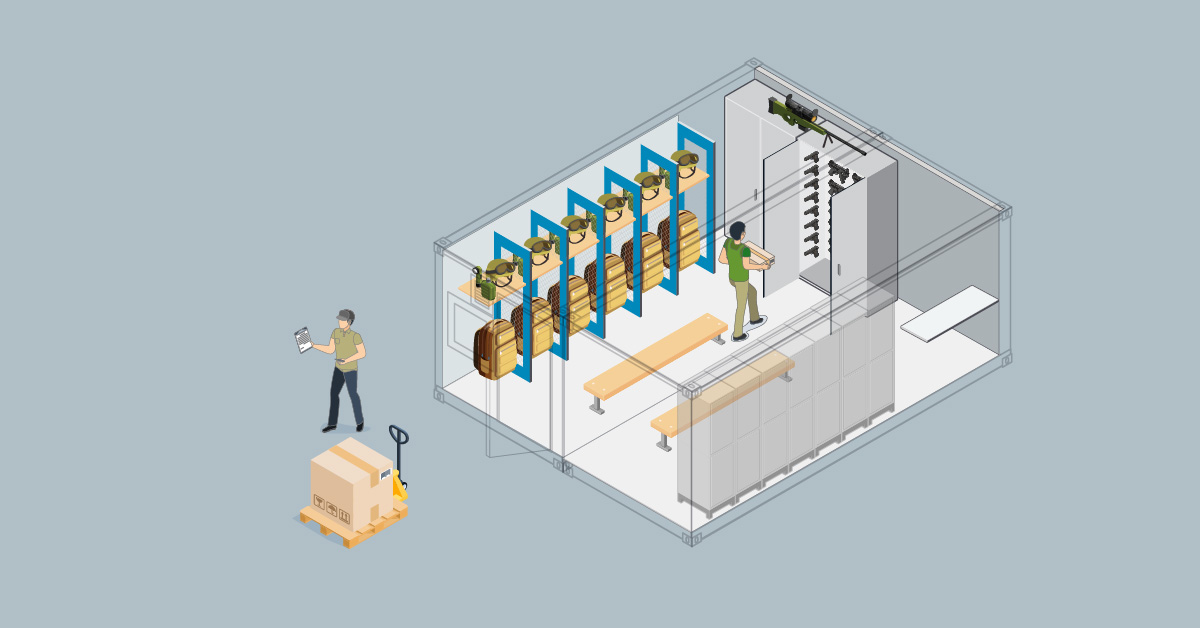
The US Military, with its widespread use of firearms, has implemented strict regulations and guidelines to govern the proper storage and handling of these weapons. In this article, we will examine the military regulation around secure firearm storage, the use of armories in the military and additional best practices around firearm storage.
In the military, strict regulations have been established to manage firearm storage. Firearm storage is an important aspect of firearms safety and is addressed in AR-190-11. This regulation provides detailed guidelines and requirements for the secure storage of firearms. This is critical to reducing the risk of accidents, theft, and unauthorized use. Physical security measures, such as lighting, barriers, and locks, are used to prevent unauthorized access and theft.
Personnel security measures, such as the education and training of soldiers, ensures that individuals who have access to firearms are authorized and qualified to use them. AR-190-11 requires training on the safe handling and use of firearms, weapon maintenance, as well as emergency response procedures. The training is designed to ensure that individuals who have access to firearms are authorized and qualified to use them.
To ensure that all firearms are accounted for, AR-190-11 requires that firearms be inventoried regularly and that records be kept of all firearms transactions, including acquisitions, dispositions, and transfers. The regulation also requires that firearms be physically marked to facilitate identification and to ensure that they can be easily traced.
According to AR-190-11, weapons must be in good condition. Firearms must be inspected regularly to detect and correct any defects or malfunctions. The regulation also requires that firearms be maintained in accordance with the manufacturer's specifications and that all firearms be cleaned and lubricated regularly to prevent corrosion and to ensure that they function properly.
Having clear and well-practiced emergency response procedures in place can help reduce the risks associated with firearms storage and provide a timely response in the event of an emergency or security incident. AR-190-11 recommends the establishment of emergency response procedures to address security incidents involving firearms. The procedures should include:
It is important to note that the specific emergency response procedures may vary depending on the nature and severity of the incident, and that AR-190-11 provides guidelines rather than specific step-by-step procedures.
To meet the "physical barrier" requirement of AR-190-11, the use of armories is an integral part of firearms storage in the military. Armories are facilities or structures specifically designed to store firearms, ammunition, and other related equipment. They are typically located in secure areas, and they are built with reinforced walls, doors, and locks, as well as climate control features to prevent rust and other forms of weapon degradation.
Armories provide a centralized location for the storage of firearms, ammunition, and other equipment, allowing for proper organization and management of inventory. This includes tracking the location and movement of weapons, as well as keeping records of who has access to them. By having a centralized location for all weapons, the military can maintain a high level of control and accountability over their use.
The armory can also provide a location for the maintenance and repair of weapons. This allows for regular inspections and a proper inventory, to ensure that all weapons are present and in good working order.
While traditional armories have been a standard in the military for many years, the use of portable armories is becoming increasingly popular. Portable armories are designed to be moved easily from one location to another, making them particularly useful in military operations where troops need to be deployed quickly and efficiently.
Portable armories can be transported on trucks, helicopters, or other vehicles, making it easier to keep weapons close to the troops who need them. This enhances mobility and accessibility, which is essential in military operations.
Like an armory facility, a portable armory is also designed to secure weapons. They also have reinforced walls, doors, and locks, as well as climate control features to prevent weapon degradation.
Another advantage of portable armories is cost-effectiveness. They can be assembled quickly and easily, and they can be disassembled just as quickly when they are no longer needed. This makes them a cost-effective option for military operations that may only last for a short period of time. In fact, portable armories can be classified as equipment, meaning that no long-term waiting on a MilCon appropriation is necessary.
Overall, portable armories provide mobility, security, accessibility, and cost-effectiveness, making them a popular choice for military operations. They are a convenient and secure way for the military to store weapons in a variety of situations.
In addition to the requirements outlined in AR-190-11, there are additional best practices that can be implemented to enhance the secure storage of firearms. Some of these best practices include:
The storage and management of firearms in the military is a critical aspect of ensuring the safety and security of troops and the wider community. The importance of following AR-190-11 regulations, using armories to store firearms properly, and establishing best practices are all important in meeting this goal.
CoverSix offers a variety of custom armories that can be used to store guns and other firearms safely and securely. In addition, we also offer portable ammunition magazines to aid in the safe storage of ammunition and explosives in accordance with ATF and US Navy standards. Visit our website to learn more about how we can help you comply with AR-190-11 to reduce risks and prioritize safety.